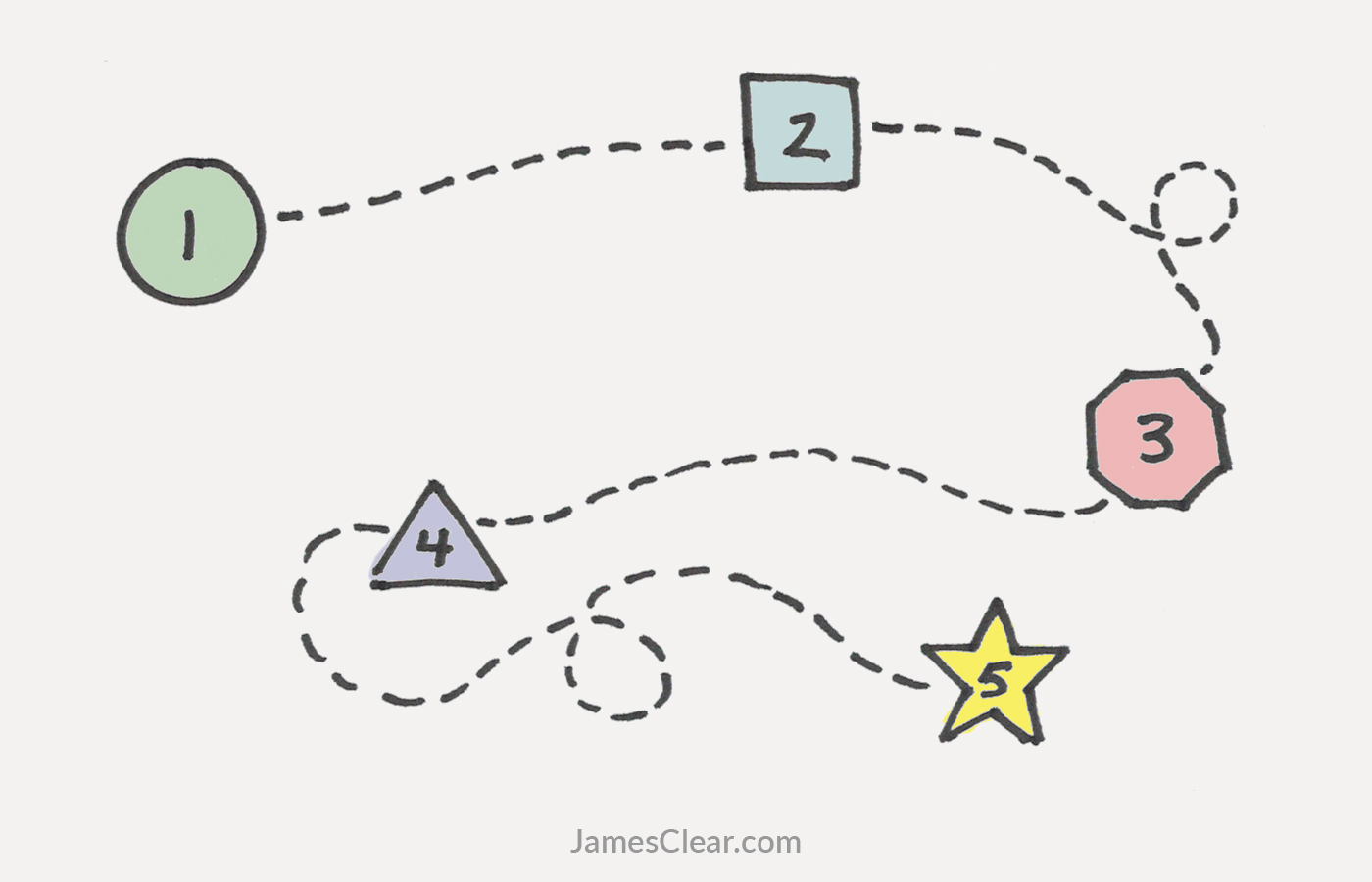Unlock Your Creative Brain: 5 Proven Steps to Innovative Thinking
Discover how to cultivate a more creative brain by following 5 proven steps. Learn evidence-based strategies to boost innovation, solve problems, and unlock your full potential.

Unlock Your Creative Brain: 5 Proven Steps to Innovative Thinking
In a world constantly evolving, the ability to think creatively isn’t just a desirable trait—it’s a fundamental skill for personal growth and professional success. Whether you’re tackling complex work challenges, navigating personal dilemmas, or simply seeking fresh perspectives, cultivating a more creative brain is essential. By understanding and applying a structured approach, you can unlock your innate capacity for innovative solutions. This article reveals five proven steps you can follow to demystify the creative process and illuminate your path to breakthrough ideas.
Why Cultivating a Creative Brain Matters in 2025
The landscape of work and life is increasingly complex, demanding adaptability and novel solutions. Research consistently highlights the growing importance of creative thinking. A recent report by the World Economic Forum (2023) identified creativity, alongside analytical thinking, as one of the top two skills employers will seek in the coming years. This isn’t just about artistic expression; it’s about problem-solving, strategic thinking, and generating value in new ways.
Furthermore, engaging your creative brain offers significant personal benefits. Studies show that individuals who regularly participate in creative activities experience reduced stress, enhanced cognitive flexibility, and a greater sense of purpose (University of California, Berkeley, 2024). To thrive in 2025 and beyond, you need a reliable method to foster innovation, and the steps we’re about to explore provide just that.
The Cognitive Science Behind Creative Breakthroughs
At its core, creativity isn’t magic; it’s a cognitive process of making novel connections between existing ideas. Psychologist James Webb Young, in his seminal 1940 guide A Technique for Producing Ideas, articulated this beautifully. He proposed that innovative ideas emerge when you combine old elements in new ways, emphasizing the ability to see relationships between seemingly disparate concepts. This perspective is supported by modern neuroscience, which suggests that creative insights often involve activating and linking different brain regions, particularly during periods of diffuse attention (Stanford University, 2023).
Understanding this underlying mechanism is crucial. It means creativity isn’t about conjuring something from nothing, but rather about reorganizing and reinterpreting the information you already possess. The challenge, then, is to optimize the conditions for these new connections to form. To cultivate a truly creative brain, follow a process that encourages both focused exploration and periods of mental incubation.
Case Study: Frederic Ives and the Birth of Modern Printing
To illustrate the power of a structured creative process, consider the story of Frederic Eugene Ives. In the 1870s, newspapers faced a costly dilemma: how to print photographs quickly and affordably. The existing method involved commissioning engravers to painstakingly etch images onto steel plates by hand, a process that was both time-consuming and expensive, with plates breaking after just a few uses.
Ives, who would later become a photography trailblazer holding over 70 patents, began his career as a printer’s apprentice. He then managed Cornell University’s photographic laboratory, immersing himself in the intricacies of cameras, printers, and optics. His deep understanding of both printing and photography provided the foundational “material” for his future breakthrough.
In 1881, after years of dedicated experimentation, Ives experienced a profound insight. He recounted going to bed in a “state of brain fog” over the problem, only to wake up with the “completely worked out process and equipment in operation… projected on the ceiling.” This flash of genius led to his patented printing approach, which became known as the Ives Process. It dramatically reduced the cost of printing images by 15-fold and remained the industry standard for 80 years. Ives’s journey perfectly demonstrates the stages involved when you consciously strive for a creative brain.
5 Proven Steps to Unlock Your Creative Brain
Building on the insights of James Webb Young and real-world examples like Ives, here are five actionable steps to cultivate your innovative capacity:
Gather New Material (Immersion & Input) This initial stage is about feeding your mind. It involves two key dimensions: acquiring specific knowledge directly related to your current challenge and broadly absorbing diverse information. Dive deep into your problem space, researching facts, data, and existing solutions. Simultaneously, cultivate a wide range of interests—read broadly, explore different fields, engage in new hobbies. The more varied the “building blocks” you accumulate, the richer your potential for novel connections. Think of Ives immersing himself in both printing and photography.
Thoroughly Work Over the Materials (Active Processing) Once you have a wealth of material, the next step is active engagement. This means consciously examining the facts, ideas, and concepts from multiple angles. Experiment with fitting different pieces together, looking for unusual combinations, contradictions, or unexpected relationships. Brainstorm, mind map, write down ideas, and actively try to force connections. This intense mental wrestling primes your brain for the eventual breakthrough. Ives spent years tinkering and experimenting, constantly trying new ways to combine his knowledge.
Step Away From the Problem (Incubation & Disengagement) This is perhaps the most counterintuitive yet critical step. After intense focus, consciously put the problem aside. Engage in an activity that excites you, energizes you, and completely takes your mind off the challenge. This could be exercise, spending time in nature, listening to music, or even simply sleeping, as Ives did. This period of disengagement allows your subconscious mind to continue processing the information in a more relaxed, diffuse state, often leading to unexpected connections that intense focus might inhibit (Psychological Science, 2024).
Let Your Idea Return to You (The “Aha!” Moment) Following a period of disengagement, and often when you least expect it, a flash of insight will emerge. This “Aha!” moment can feel sudden and effortless, as if the solution simply appeared. It’s the culmination of the previous steps—the subconscious mind delivering the new combination of ideas it forged during incubation. Ives’s vision projected on his ceiling is a classic example of this stage. Many creative individuals report insights striking during walks, showers, or just before sleep.
Shape and Develop Your Idea Based on Feedback (Refinement & Iteration) An initial insight is rarely a fully formed, perfect solution. For any idea to succeed, it must be brought into the real world, tested, and refined. Share your concept with trusted colleagues, mentors, or even potential users. Be open to criticism and feedback, viewing it as an opportunity to strengthen and adapt your idea. Ives didn’t stop after his first patent; he continuously improved his process for years, filing a second patent for an even more simplified and effective method. This iterative refinement is crucial for transforming a raw idea into a truly impactful innovation.

Common Pitfalls on the Path to Creativity
While the five steps provide a clear roadmap, several common mistakes can hinder your progress toward a more creative brain:
- Over-reliance on “Brainstorming”: Simply throwing out ideas without prior research or incubation often leads to superficial solutions. Effective brainstorming requires preparation.
- Fear of Failure or Judgment: Many brilliant ideas are stifled by the fear of looking foolish or making a mistake. Embrace experimentation and view failures as learning opportunities.
- Skipping the Incubation Phase: In our fast-paced world, it’s tempting to push relentlessly. Neglecting to step away and allow for subconscious processing can prevent breakthrough insights.
- Lack of Diverse Input: Sticking to familiar information sources limits the “raw material” for new combinations. Actively seek out perspectives from different fields and backgrounds.
- Ignoring Feedback: Falling in love with your initial idea can prevent crucial refinement. Constructive criticism is vital for transforming a good idea into a great one.
Advanced Strategies for Sustained Innovation
Beyond the foundational five steps, consider these advanced techniques to consistently foster a creative brain:
- Embrace Constraints: Paradoxically, limitations can spark creativity. Imposing specific boundaries (e.g., “solve this with only three resources”) forces divergent thinking.
- Practice Deliberate Cross-Pollination: Actively seek out knowledge and methods from unrelated fields and apply them to your domain. What can biology teach you about business strategy?
- Cultivate a “Serendipity Mindset”: Remain open and observant to unexpected connections. Keep a journal to capture fleeting thoughts or observations that might seem irrelevant at first (Journal of Applied Psychology, 2023).
- Build a Diverse Network: Surround yourself with individuals from varied backgrounds, disciplines, and thought patterns. Their unique perspectives can provide invaluable “material” and feedback.
- Schedule “Thinking Time”: Dedicate specific, uninterrupted blocks in your calendar not just for work, but for open-ended exploration, reading, and reflection—the fertile ground for new ideas.
Your Creative Action Plan: Next Steps
Ready to cultivate a more creative brain? Here’s how to start applying these principles today:
- Identify a Challenge: Choose a specific problem or area in your life or work where you desire a creative solution.
- Start Gathering: Dedicate 30 minutes daily to learning something new, both related to your challenge and broadly outside your usual domain.
- Schedule Incubation: After a focused work session, plan a complete break. Go for a walk, listen to music, or engage in a hobby for at least an hour.
- Document Insights: Keep a notebook or digital memo ready to capture any ideas that emerge during or after your incubation period.
- Seek Feedback Early: Once you have a nascent idea, share it with one trusted person for their initial thoughts. Be prepared to refine.
Frequently Asked Questions About Creativity
What is the most effective way to boost creativity quickly?
The most effective way to quickly boost creativity is often by stepping away from the problem after intense focus. This “incubation” period allows your subconscious mind to make novel connections, often leading to a sudden insight or “aha!” moment (Psychological Science, 2024).
Can creativity be learned, or is it innate?
Creativity is a skill that can absolutely be learned and developed through practice and by following structured processes. While some individuals may have a natural predisposition, anyone can significantly enhance their creative capabilities by applying proven techniques and strategies.
How does sleep impact the creative process?
Sleep plays a crucial role in creativity by consolidating memories and facilitating the reorganization of information. During sleep, the brain actively processes previously gathered material, often forming new associations and leading to creative insights upon waking (Harvard Medical School, 2023).
What role does feedback play in developing creative ideas?
Feedback is essential for refining and strengthening creative ideas. Initial insights are often raw; constructive criticism from others helps identify flaws, explore alternative perspectives, and adapt the idea to be more robust and effective in the real world.
Key Takeaways for a More Creative Brain
Cultivating a truly creative brain means embracing a systematic yet flexible approach to ideation. Remember that creativity isn’t about inventing from scratch but about making new connections between existing elements. By diligently gathering diverse material, actively processing it, allowing for periods of incubation, welcoming insights, and rigorously refining your ideas based on feedback, you can consistently generate innovative solutions. To unlock your creative brain, follow these proven steps, and transform your potential into impactful reality.
About Maya Chen
Relationship and communication strategist with a background in counseling psychology.
View all articles by Maya Chen →Our content meets rigorous standards for accuracy, evidence-based research, and ethical guidelines. Learn more about our editorial process .
Get Weekly Insights
Join 10,000+ readers receiving actionable tips every Sunday.




